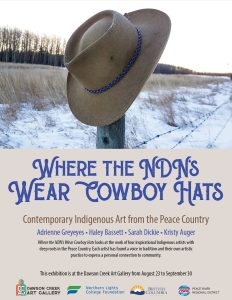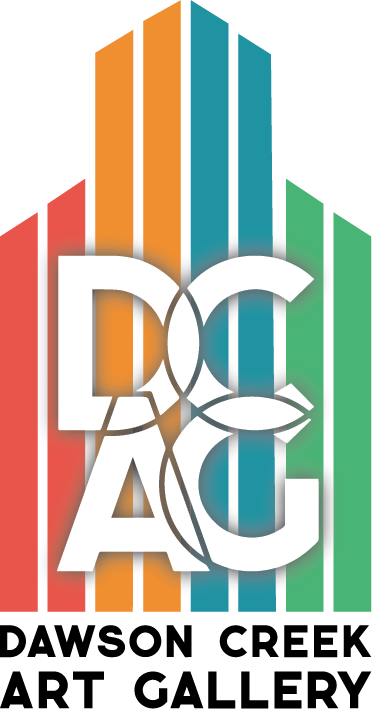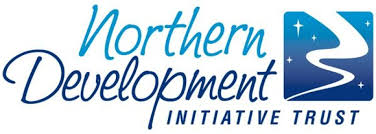
Adrienne Greyeyes
Adrienne Greyeyes is a nehiyaw from the Bigstone Cree Nation in Northern Alberta. She pursued teachings of cultural arts since she was a teenager and spent many hours with her nohkomak, elders, and teachers learning and perfecting her skills. In addition, Adrienne is a graduate of the Emily Carr University of Art and Design.
The purpose of her work is to honor traditional practices by focusing on a minimalist design that serves to emphasize the natural beauty of the traditional materials. The work involved in obtaining a moose hide and processing it takes considerable skill, time and knowledge and the finished hide is so precious and beautiful on its own. There is much patience and skill required to complete a beaded project as well as honour in being able to carry on family designs. Adrienne’s beadwork reflects the lifecycles of medicines and stories emphasizing the importance of relationship between land and identity.
When I was small nimosompan ekwa nohkom (grandfather and grandmother) took me to the bush with them. I slept in the trees while they picked berries and this is how I spent every summer in my youngest years. Walking on the moss has always been a source of comfort for me. Now with land destruction and resource extraction berries are becoming harder to find and possibly unsafe to eat. This relationship between ourselves and land is becoming so fragile and that comfort that becomes a memory.
Haley Bassett
Haley Bassett is an award-winning interdisciplinary artist and arts administrator of Métis and Eastern European descent. Born in 1991 to cattle-rancher parents, she lives and works in Sunset Prairie, BC, which is in the traditional territory of the Dene, Dane-zaa, and Cree, encompassed by Treaty 8 and the Métis Homeland.
In May 2020, she completed her BFA in Visual Arts from Emily Carr University, minoring in Social Practice and Community Engagement.Although Bassett started out as a painter, her visual practice has since broadened to include sculpture, installation, beadwork, found objects, natural materials and textiles. Her oeuvre explores how time, place, family histories, and personal traumas converge as formational aspects of the self. Her work draws inspiration from her Métis and Eastern European heritage.
Kristy Auger
Kristy Auger is a nêhiyaw (Plains Cree (Northern)) artist from Bigstone Cree Nation. She was raised in Fort St. John BC. She has a BA in Indigenous Art from First Nations University in Regina. Her current practice combines relief printmaking with beading and/or quilling. Her art revolves around the themes of healing and transformation as they relate to her culture and kikawiynaw askiy (our mother earth).
Kristy’s language, nêhiyawêwin (Plains Cree) is often used in her artwork to express cultural values and ideologies. The beading and porcupine quillwork that she sews onto her prints symbolize connection to okihci-âniskotâpâna (ancestors). She lives in Regina, Saskatchewan with her partner and son.
Sarah Dickie
Growing up surrounded by beads, fur, moosehides, thread, needles and needles (miraculously with no lasting injuries). From making very practical moccasins, mukluks, mittens, gloves and hats to more decorative purses, broaches, vests, shawls and long, dangly and sparkly earrings, the perspective of it being a home craft and not a form of art prevented me from viewing it as anything but items that could be gifted to friends and relatives.
The manner in which moose are hunted and with all of the animal parts being used, to the way that the hides are painstakingly tanned and preserved, harmony with nature is an important piece that underpins a lot of my work. Tiny little scraps of hide are carefully collected and used for little projects.
My Etsoo (grandmother) has moose hides that her mother and her own grandmother tanned and keeps them for very special projects. Even finding a porcupine, killed by highway traffic, on the side of the road is a cause for ceremony, celebration and maybe even collection of quills for potential use in future projects. The time involved in every project is hard to calculate. The layers of meaning, cultural value, history, perspective and stories add a lot of value to artistic practice and it is one of the most personally rewarding aspects of my work.




